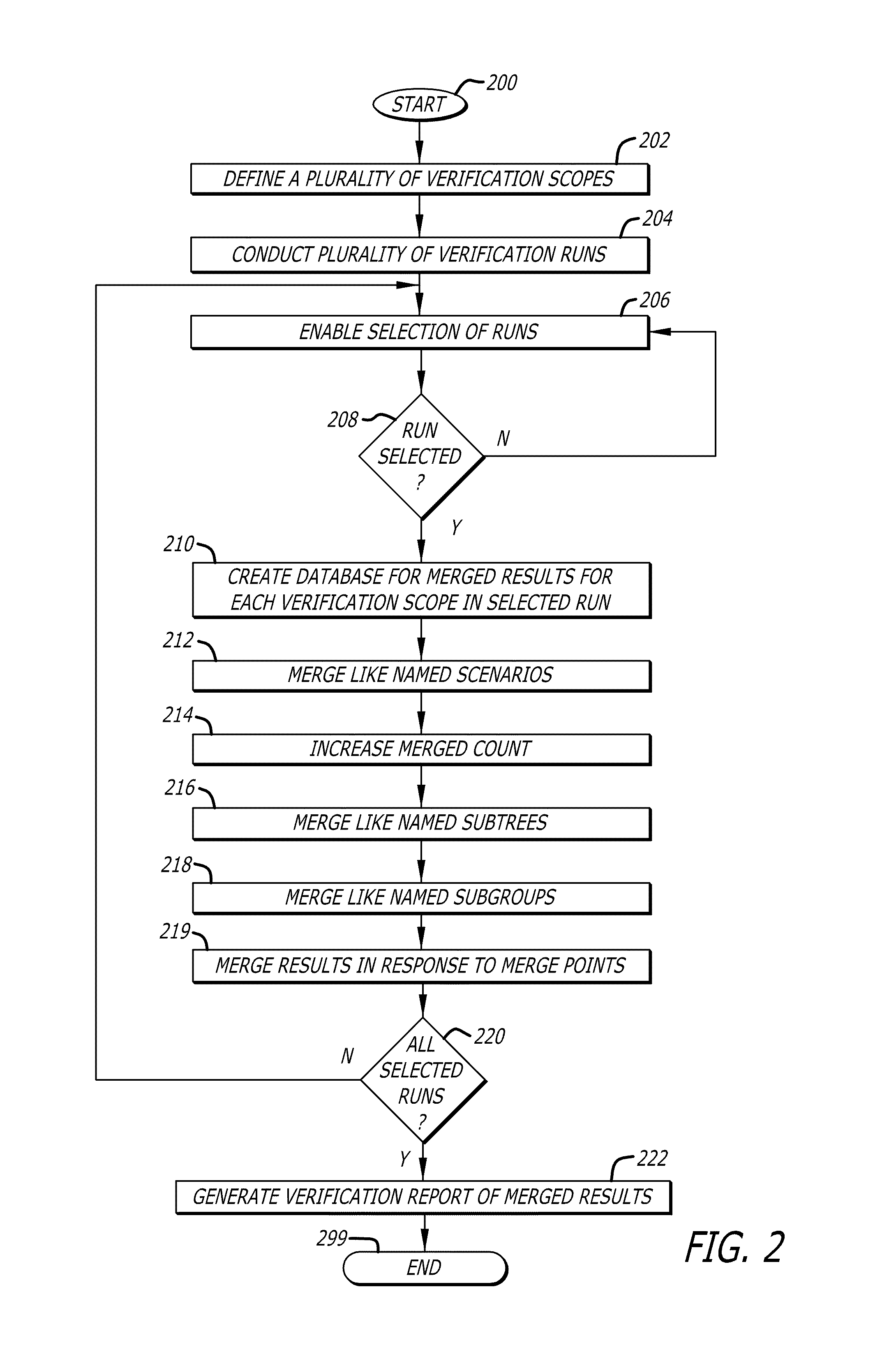Verification plans to merging design verification metrics
a technology of design verification and verification plans, applied in the direction of cad circuit design, program control, instruments, etc., can solve the problems of not being able to exercise all logic, the task of verification may be trivial, and the verification becomes significantly difficult, so as to achieve accurate progress measurement, more flexible control over the model merge operation, and accurate progress measurement
- Summary
- Abstract
- Description
- Claims
- Application Information
AI Technical Summary
Benefits of technology
Problems solved by technology
Method used
Image
Examples
##s example ahb vips
SRS Example AHB VIPs
[0307]FIG. 16 illustrates an exemplary verification intellectual property (VIP) module, an advanced high performance bus (AHB) verification intellectual property (VIP) module, and its form of requirements when instantiated in an integrated circuit. FIG. 16 shows a first test bench (TB#1) for Module Verification and a second test bench (TB#2) for System Verification. The user has a number of goals in mind with respect to these test benches. The coverage and check results from the AHB VIP instances in the first test bench TB#1 and TB#2 shall be separated with no type based results being planned. Another goal is that the coverage results for the UART in the first test bench TB#1 and the coverage results for the first UART (UART#1) in the second test bench TB#2 shall be merged together.
[0308]FIG. 17 illustrates a hierarchical representation of the two runs for verification of the first and second test benches shown in FIG. 16.
Using Verification Scopes, Named Subtrees...
example 1
[0353]
test test1 {verification_scope: VS1;named_subtree: NST1: “dut.ctrl1.arb1”;...}test test2 {verification_scope: VS2;named_subtree: NST2: “sys.master1.ctrl1.arb1”;...}
[0354]Example 1 defines two tests, test1 and test2. The test container for each test defines a verification scope and a named subtree. The test test1 defines verification scope VS1 and gets associated with it and defines a named subtree NST1 with hierarchical instance path “dut.ctrl1.arb1” as the root of the named subtree. Similarly, test test2 defines verification scope VS2 and gets associated with it, and defines a named subtree NST2 with hierarchical instance path “sys.master1.ctrl1.arb1” as the root of the named subtree.
[0355]Additionally, test1 has a default named subtree associated with it. The default named subtree had id “dut” and is rooted at “dut”. Similarly, test2 has a default named subtree with id “sys” and rooted at “sys”, associated with it.
[0356]Consider a second example specification of named subtre...
example 2
[0357]
group A {named_subtree: CMNST: “dut.a”;test test1 {named_subtree: NST1: “dut.ctrl1.arb1”;...}test test2 {named_subtree: NST2: “dut.ctrl1.counter1”;...}...}
[0358]In Example 2, the two tests have a named subtree defined each. In addition each test has a default named subtree with id “dut” rooted at “dut”. The group specific named subtree “CMNST” is also another subtree associated with each of the two tests. Thus, each test has three named subtrees associated with it.
[0359]Invalid hierarchy specified as subtree root: An error is reported by the verification manager (VM) if an invalid hierarchy node is specified as subtree root. This is reported in the verification manager (VM) console at the time of analysis.[0360]Same subtree name for two nodes in the same run: An error is reported by the verification manager (VM) if the same subtree name is specified for two nodes in the same run.[0361]Same subtree name for parent and child: An error is reported by the verificat...
PUM
 Login to View More
Login to View More Abstract
Description
Claims
Application Information
 Login to View More
Login to View More - R&D
- Intellectual Property
- Life Sciences
- Materials
- Tech Scout
- Unparalleled Data Quality
- Higher Quality Content
- 60% Fewer Hallucinations
Browse by: Latest US Patents, China's latest patents, Technical Efficacy Thesaurus, Application Domain, Technology Topic, Popular Technical Reports.
© 2025 PatSnap. All rights reserved.Legal|Privacy policy|Modern Slavery Act Transparency Statement|Sitemap|About US| Contact US: help@patsnap.com



